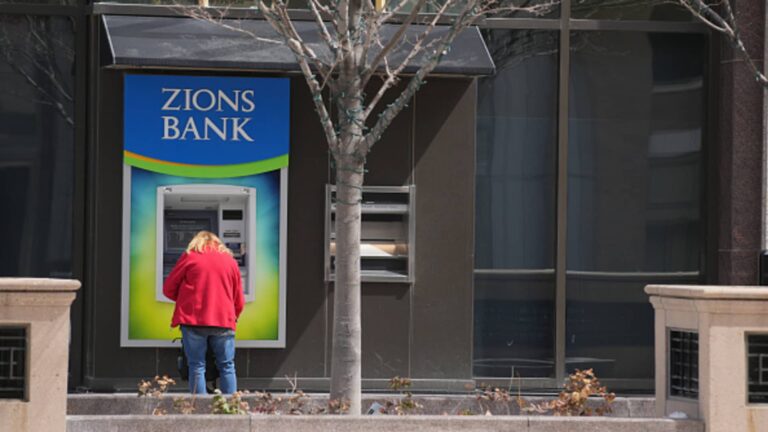Despite concerns about bad loans at midsize U.S. banks, there is little evidence of systemic problems, according to a senior analyst at Moody’s Ratings.
Marc Pinto, the agency’s head of global private credit, acknowledged in an interview on CNBC’s “Squawk Box” that there are concerns about lax lending standards and some laxity in the terms that financial institutions attach to loans.
But he said looking at the system as a whole, there was no clear epidemic that could cause a broader financial crisis.
“If you dig deeper here and look at whether there is a turn in the credit cycle that effectively seems to be what the market is looking at, we don’t see any evidence,” Pinto said. “That’s the situation we’re seeing today. It’s always subject to change. But if you look at the asset quality numbers we’ve seen over the past few quarters, it hasn’t gotten much worse.”
Bank stocks across the board were sold aggressively on Thursday after Zions & Bancorp and Western Alliance Bancorp disclosed bad debt holdings related to the bankruptcies of two auto finance companies. Concerns have dragged down investment bank Jefferies’ stock price since it disclosed some of its exposure to bankrupt auto parts maker First Brands this month.
Losses widened across the sector on Thursday as concerns grew that the danger could spread further. JPMorgan Chase & Co. CEO Jamie Dimon raised some eyebrows earlier this week when he said during the bank’s earnings call, “If you see one cockroach, there’s probably more.”
“One cockroach doesn’t set a trend,” Pinto said.
In fact, Pinto said high-yield bond default rates this year remained relatively low, less than 5%, and are expected to fall to less than 3% by 2026. By comparison, during the 2008 financial crisis, high-yield bond default rates were in the low double digits.
At the same time, the U.S. economy is proving stronger than expected, despite weakness in the labor market and deep concerns about the impact of President Donald Trump’s tariffs on inflation and consumer demand, Pinto added.
“One of the words I keep hearing is resilience,” said Pinto, who is attending a meeting with about 2,000 bankers this week.
“In terms of GDP growth, we are doing much better than many people thought just six months ago,” he said. “Again, in terms of credit conditions, we feel that credit quality is currently in fairly good shape and could potentially improve given the GDP growth rate and the expected decline in interest rates.”
Market sentiment appeared to have improved on Friday following Thursday’s decline.
The SPDR S&P Regional Banking Exchange Traded Fund, which tracks mid-market leaders, fell 6.2% on Thursday but rose 2% in premarket trading Friday.


